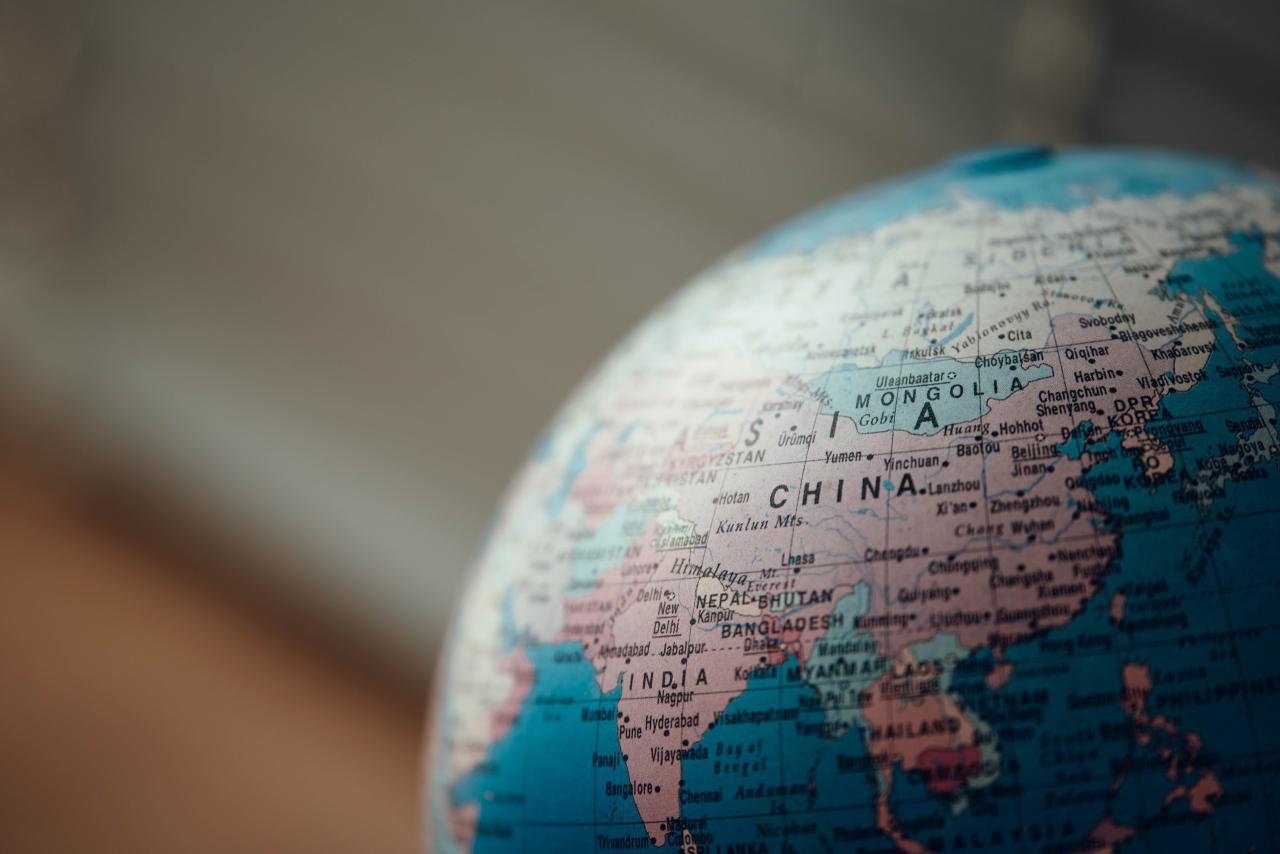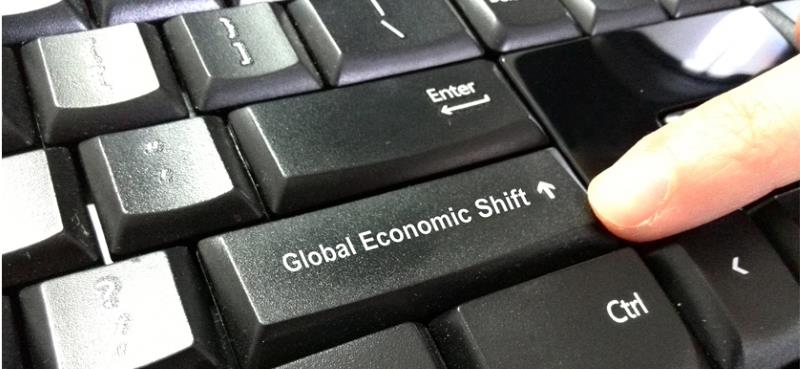The global economy is a ceaselessly evolving entity, a complex tapestry woven from the threads of technological innovation, geopolitical dynamics, environmental imperatives, and shifting demographic patterns. Far from static, it undergoes continuous transformations that ripple across continents, influencing everything from the price of your daily necessities to the viability of major multinational corporations. Understanding these global economic shifts is not merely an academic exercise; it is an absolute necessity for individuals, businesses, and governments alike to make informed decisions, mitigate risks, and seize emerging opportunities. This comprehensive guide will meticulously analyze the profound changes reshaping the world’s financial landscape, dissecting their causes, implications, and future trajectories. Whether you are an investor, an entrepreneur, a policymaker in Indonesia, or simply a concerned global citizen, gaining clarity on these powerful economic currents is paramount to navigating a future defined by constant change.
The Drivers of Global Economic Shifts

Modern economic shifts are rarely driven by a single factor. Instead, they result from the intricate interplay of several powerful, interconnected forces.
A. Technological Revolution and Digital Transformation
The relentless pace of technological advancement is arguably the single most disruptive and transformative force shaping the global economy.
- A. Artificial Intelligence (AI) and Automation:
- Productivity Boosts: AI and automation (robotics, intelligent software) are poised to dramatically increase productivity across industries, leading to higher output per worker.
- Labor Market Transformation: While creating new jobs (e.g., AI trainers, data scientists), AI will also displace jobs, particularly in routine, repetitive tasks. This necessitates massive reskilling and upskilling initiatives globally.
- New Industries: The development of AI itself, and its application in fields like personalized medicine, autonomous vehicles, and advanced manufacturing, spawns entirely new economic sectors.
- B. Blockchain and Decentralized Technologies (Web3):
- Financial Innovation: Cryptocurrencies, Decentralized Finance (DeFi), and Non-Fungible Tokens (NFTs) are disrupting traditional financial systems, offering new ways to transfer value, lend, borrow, and own digital assets.
- Supply Chain Transparency: Blockchain’s immutable ledger technology enhances transparency and traceability in supply chains, reducing fraud and improving efficiency.
- Digital Ownership and Creator Economy: NFTs empower artists and creators by enabling verifiable digital ownership and direct monetization channels.
- C. Connectivity and Data Explosion:
- Ubiquitous Internet: The expansion of high-speed internet (including 5G) continues to drive the digital economy, enabling remote work, e-commerce, and global collaboration.
- Big Data Analytics: The sheer volume of data generated is allowing businesses to make more informed decisions, personalize products, and optimize operations, leading to competitive advantages.
- Cybersecurity Risks: Increased reliance on digital infrastructure also means heightened vulnerability to cyberattacks, posing significant economic and national security risks.
B. Geopolitical Dynamics and Shifting Power Balances
The global political landscape is becoming increasingly fragmented and competitive, with profound economic repercussions.
- A. Rise of Multipolarity: The global order is shifting from unipolarity to a multipolar world, with new economic and political blocs emerging (e.g., BRICS expansion, increased regional alliances). This can lead to more diverse trade relationships but also increased rivalry.
- B. Trade Protectionism and “De-risking”: The trend towards protectionist policies, tariffs, and non-tariff barriers is growing. Countries are prioritizing national security and supply chain resilience over pure economic efficiency, leading to “de-risking” or “friend-shoring” (realigning supply chains with geopolitical allies).
- C. Resource Competition: Growing demand for critical minerals (e.g., for electric vehicles, renewable energy) and disputes over energy supplies are fueling geopolitical tensions and commodity price volatility.
- D. Sanctions and Economic Coercion: The increased use of economic sanctions as a foreign policy tool creates uncertainty for global businesses and financial markets.
- E. Regional Conflicts and Instability: Ongoing conflicts (e.g., in Eastern Europe, the Middle East) and political instability in key regions can disrupt trade routes, energy supplies, and investment flows.
C. Climate Change and the Green Transition
The accelerating impacts of climate change and the global response to it are fundamentally reshaping economies worldwide.
- A. Physical Risks: Extreme weather events, rising sea levels, water scarcity, and biodiversity loss are causing direct economic damages (infrastructure, agriculture, tourism) and displacing populations.
- B. Regulatory and Policy Shifts: Governments are implementing carbon taxes, emissions trading schemes, renewable energy mandates, and stricter environmental regulations, impacting traditional industries and fostering new green sectors.
- C. Investment in Green Economy: Massive global investments are flowing into renewable energy (solar, wind, geothermal in Indonesia), electric vehicles, sustainable agriculture, carbon capture technologies, and resilient infrastructure. This is creating new job markets and investment opportunities.
- D. Supply Chain Reshaping: Companies are re-evaluating supply chains for climate vulnerability and seeking more sustainable sourcing.
- E. “Greenflation”: The transition to a green economy may cause some initial inflationary pressures due to increased demand for certain materials and technologies.
D. Demographic Transformations
Long-term shifts in global population structures are exerting profound economic pressures and opportunities.
- A. Aging Populations: In many developed countries (Japan, Europe, North America) and increasingly in large developing economies (China, and to a lesser extent, Indonesia), aging populations lead to:
- Labor Shortages: Reduced working-age populations can create labor market tightness and wage pressures.
- Fiscal Strain: Increased demands on social security, healthcare, and pension systems.
- Changing Consumption Patterns: Shifts from goods to services, and increased demand for healthcare and elder care.
- B. Youth Bulges: Many countries in Africa, South Asia (like India), and parts of Southeast Asia (including Indonesia, though its demographic bonus is peaking) still have large young populations. This offers a potential demographic dividend but requires massive investment in education, job creation, and infrastructure to prevent social instability.
- C. Migration Patterns: Global migration continues to reshape labor markets, demographics, and social structures, with economic impacts on both sending and receiving countries.
- D. Urbanization: The ongoing shift of populations from rural to urban areas drives demand for urban infrastructure, housing, and services, particularly in developing economies.
E. Evolving Financial Systems
The global financial architecture is adapting to new technologies and economic realities.
- A. Central Bank Digital Currencies (CBDCs): Many central banks (including Bank Indonesia) are exploring or developing digital versions of their fiat currencies. CBDCs could reshape payment systems, increase financial inclusion, and enhance monetary policy control.
- B. Decentralized Finance (DeFi) Growth: The rise of blockchain-based financial services (lending, borrowing, trading) outside traditional banks poses both opportunities and regulatory challenges.
- C. Digital Payments: The rapid adoption of digital payment systems continues to transform commerce, improving efficiency and data collection.
- D. Global Debt Levels: High levels of public and private debt in many countries present vulnerabilities, especially in a rising interest rate environment.
Implications of Global Economic Shifts

These overarching forces translate into concrete impacts across various facets of the economy.
A. Inflationary Dynamics
The nature of inflation is changing, moving beyond simple demand-pull or cost-push factors.
- A. Supply Chain Volatility: Geopolitical events and climate shocks create episodic supply disruptions, leading to price spikes.
- B. Deglobalization/Friend-shoring: Shifting production away from lowest-cost locations to more geopolitically aligned ones can increase production costs.
- C. Green Transition Costs: Investments in decarbonization and new energy infrastructure may initially contribute to “greenflation.”
- D. Labor Market Tightness: Persistent labor shortages in key sectors can lead to sustained wage growth, potentially feeding into inflation.
B. Shifting Global Trade and Investment Patterns
- A. Regionalization: Growth of regional trade blocs and localized supply chains.
- B. Reshoring/Nearshoring: Companies bringing production closer to home or to nearby countries for security and resilience.
- C. Digital Trade Growth: Increasing trade in services and digital goods, which often face different barriers than physical goods.
- D. FDI Re-evaluation: Foreign direct investment flows are being scrutinized through a geopolitical lens, favoring more secure and stable destinations.
C. Labor Market Evolution
- A. Skill Gaps: A growing mismatch between the skills demanded by new technologies (AI, green tech) and the skills available in the workforce.
- B. Gig Economy Expansion: Increased prevalence of flexible, independent work arrangements, raising questions about worker protections and social safety nets.
- C. Remote Work: The sustained trend of remote and hybrid work is reshaping urban planning, real estate, and talent acquisition strategies.
D. Financial Market Volatility
- A. Policy Divergence: Different central banks pursuing divergent monetary policies can lead to currency fluctuations and capital flow volatility.
- B. Geopolitical Risk Premium: Increased geopolitical tensions can add a “risk premium” to asset prices, leading to greater market swings.
- C. Digital Asset Integration: The increasing integration of cryptocurrencies and digital assets into traditional financial markets introduces new sources of volatility and regulatory challenges.
Strategies for Adaptation and Growth
Understanding these shifts is only the first step. Proactive adaptation is key to thriving in the new global economy.
A. For Governments and Policymakers:
- A. Invest in Human Capital: Prioritize education, vocational training, and lifelong learning programs to equip the workforce with future-proof skills. Focus on STEM fields and digital literacy.
- B. Foster Innovation and Digital Infrastructure: Support R&D, create regulatory sandboxes for new technologies (like fintech and blockchain), and invest in robust digital infrastructure (e.g., expanding internet access across Indonesia’s archipelago).
- C. Enhance Supply Chain Resilience: Implement policies that encourage diversification of critical supply chains, potentially through incentives for domestic production or “friend-shoring” with key allies.
- D. Sustainable Transition: Develop clear, consistent policies for the green transition, including carbon pricing mechanisms, renewable energy targets, and incentives for green investments. Leverage Indonesia’s abundant renewable energy potential (geothermal, solar, hydro).
- E. Fiscal Prudence: Manage public debt responsibly to maintain fiscal space for future investments and crisis response.
- F. Regulatory Frameworks for New Technologies: Develop clear and balanced regulations for digital assets and AI to foster innovation while protecting consumers and maintaining financial stability.
- G. Promote Regional Cooperation: Strengthen ties within ASEAN and other regional blocs to enhance economic resilience and bargaining power on the global stage.
B. For Businesses:
- A. Digital Transformation: Embrace AI, automation, and data analytics to enhance productivity, optimize operations, and create new products/services.
- B. Diversify Supply Chains: Reduce reliance on single sources or regions for critical inputs. Explore local sourcing where feasible.
- C. Invest in Workforce Reskilling: Proactively train employees for new roles created by technology and green transitions.
- D. Agile Business Models: Develop flexible business models that can adapt quickly to market disruptions and changing consumer preferences.
- E. ESG Integration: Integrate Environmental, Social, and Governance (ESG) considerations into business strategy, as this is increasingly important for investors and consumers.
- F. Global Market Access: For Indonesian businesses, look beyond traditional markets; explore new export opportunities in emerging economies and leverage digital platforms for international reach.
C. For Individuals:
- A. Financial Literacy and Resilience: Deepen your understanding of personal finance, budgeting, saving, and investing. Build a robust emergency fund.
- B. Skill Adaptability: Continuously learn and upgrade your skills. Focus on “human” skills that are harder for AI to replicate (creativity, critical thinking, emotional intelligence) and technical skills in demand.
- C. Diversify Income Streams: Explore side hustles or passive income opportunities to reduce reliance on a single job.
- D. Smart Investing:
- Diversify Globally: Consider investing in international markets and different asset classes to reduce country-specific risk.
- Inflation Awareness: Invest in assets that have historically offered protection against inflation.
- Long-Term View: Maintain a long-term perspective for investments, riding out short-term volatility.
- E. Consumer Awareness: Be aware of how global shifts impact prices (e.g., for imported goods, energy) and adjust your spending habits accordingly. Support local businesses where possible.
- F. Engage in Lifelong Learning: The best investment is in yourself. Stay curious and proactive in acquiring new knowledge.
Conclusion
The global economic shifts we are currently witnessing are not mere transient phenomena; they represent profound, structural transformations that will redefine prosperity, risk, and opportunity for decades to come. From the accelerating march of digital innovation and the realignment of geopolitical power to the urgent demands of climate change and the complexities of demographic evolution, the world is in a state of continuous flux. By actively analyzing these forces, understanding their multifaceted implications, and implementing adaptive strategies at individual, business, and governmental levels, we can move beyond simply reacting to change. Instead, we can strategically position ourselves to thrive, build resilience, and collaboratively shape a more prosperous, sustainable, and equitable future in this interconnected global economy. The time for informed action is now.


